
Take five motorcycles. All but one are V-Twins (10 years ago an endangered species, now one of the dominant motorcycle engines). All sized from 1100 to 1500cc, all weighing 550 or more. All with four or five gears, none with seat heights above 29 inches. They're painted different colors, but if you think that we can't tell them apart by anything other than the paint -- well, you're pleasantly wrong. How different can they be? That's the question non-cruiser aficionados always ask, and it's usually answered one way "If you have to ask, you don't understand."
Even if you've never sat on a cruiser in your life, it's actually easy to understand their appeal. They are motorcycles for the dietetically challenged. No thin people need apply. The svelte look silly in the ample tractor-based seat of an American style cruiser. Fat guys own cruisers. It's fair enough: Fat guys look ridiculous in full leathers, especially after shoe-horning their beerguts behind sculpted gas tanks of sportbikes so their arms wave in the air like beetles. And as the keep-fit fad dies among baby boomers (Who can face a two hour workout every day for the rest of their lives?) potential cruiser owners will soon become the majority of the motorcycle riding population.
Ah well, weight is weight. And after all, every cruiser motorcycle sells by image, not reality. These five heavyweight heroes (total tonnage, 1.5) plunked their substantial selves on the widely spreading seats of the our five heavyweight cruisers, one each from Harley-Davidson, Honda, Kawasaki, Suzuki, and Yamaha, then took off for a romantic cruise. To the burger joint, for a heart attack special. Over three burgers and two fluffy vegetarian things, we rated the bikes. Then we ate more burgers, and tested the suspension. Here's what we found.
1: Kawasaki Vulcan 1500 Classic
It's taken some reworking to make this cruiser so smooth. Kawasaki's engineers retained the four-speed transmission from the original Vulcan, but upped the gear ratio for the top three. Now, although you wouldn't know it from the tachometer (especially since there is no tach), the engine loafs over at a low 2,500 rpm at 60mph. At this point in the engine's power curve, vibration is minimal. Yet torque is there in plenty, thanks again to Kawasaki's re-engineering of the big motor's power curve.
Swinging a leg over the well-shaped saddle, the rider's first impression is of size. The gas tank may only hold a teacupful over four gallons, but it feels like a 55 gallon drum between your knees. Substantial is the word. The handlebars, too, are high, wide, and buckhorned. Seat height is low enough that almost anyone can feel in control, instantly. Despite the huge size, manageability is good. The bike has good balance and feel, and can be hustled through corners at a reasonable pace. When something does touch down, it's usually a footboard first. The brakes are confidence-inspiring, and well up to stopping this wide load. Suspension is a problem on a long, low bike, and the Kawasaki's twin shocks are wooden and unresponsive, until you put even more weight, in the shape of a passenger, on them. Then they start to smooth out the bumps more.
What you need on the Kawasaki to appreciate the control placement, is an open face helmet. Most of us wussies feel naked without the protection of a full face, but the tank-mounted speedometer and all idiot lights are invisible in front of the protective chinbar on a full face lid. This malady is common on cruisers, and since only the Fat Boy has self-canceling turn signals, flashers left on was the most common symptom of the lack of feedback. On the positive side, moving the gadgets to the tank did give enough room for Kawasaki to plant an effective fuel gauge under the speedo, and the view of the uncluttered triple clamps and clasically shaped headlamp shell is elegant in the extreme.
If you like chrome, you'll love the Vulcan. Acres of chrome plate cover the wide forks, the huge headlamp, and both air cleaners. (There's one of the round chrome pieces on each side, although only one 40mm carburetor sits between the Vee. Style wins out over function, yet again.)
2: Harley-Davidson Fat Boy
More importantly, to our bunch of overweight weenies anyway, is the power level, which is on the low side. There may well be a stump-pulling, 80 inch V-twin under those svelte silver tanks, but modern pollution patrols and emissions tests have emasculated it. You can get serious power out of a Harley big twin: It takes about $1000 to get another 15-20 horsepower out of it.
Handling, however, is good. The rigid mount motor and disc wheels contribute to the absolutely solid feel of this machine, and compared to some of the knuckle-draggers in this test, ground clearance is ample. It takes a fairly serious effort into a corner before draggage occurs. The single front disc lacks the authority of some of the other machines, unsurprisingly, given the Harley's second-highest weight of the test (only the Royal Star is heavier), but give it a good hard yank, and you'll stop in plenty of time for breakfast.
More important than performance to many riders is the seat height. Here, the Fat Boy is unbeatable. The sub-26 inch seat height means even your grandmother could swing a leg over with ease. You'll have to use Harley's padlock style steering lock, secured with an ace key, to keep her from stealing away on the Fat Boy, since the ignition key is a simple, tank mounted switch. Or should we say tanks, because there are two. Two gas tanks means twin gas tank filler caps. Both have to be removed to fill the tanks (unless you want to wait an awful long time for the gas to drain through via the petcock hose), but each cap is threaded differently, so they cannot be misplaced. Things are different on a Harley.
3: Suzuki 1400 Intruder:
But aren't we missing the point here? The Intruder just doesn't exude the kind of style our two higher-placed cruisers command. The smaller size of the 'zuki is accentuated by the narrow bars: stepping off one of the other behemoths, your hands extend forward without meeting the grips, because they seem so close together.
Odd that Suzuki would try to reduce the apparent size of the bike with optical tricks like this, when everyone else is adding pounds faster than a Georgian powerlifter. Get on the gas, though, and the lack of weight means the bike will take off fast. It's got great throttle and roll-on response, just like a real V-twin should (helped by its low weight, of course). At the traffic light Grands Prix, its the Suzuki that will always come out in front. At constant speed on the freeway, though, the carburetion feels on the lean side, and this lean surge (familiar to riders of mid-eighties bikes) is annoying. It feels like the bike is constantly just about to run out of gas. Cruising around town, on a constantly changing throttle, and the feel is not discernible. You can just see the grin on the rider's face, as he passes bikes that cost twice as much.

Motorcycle.com presents an unrivaled combination of bike reviews and news written by industry experts
More by Motorcycle.com Staff



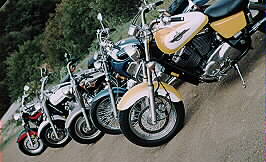











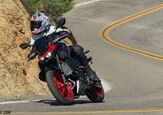
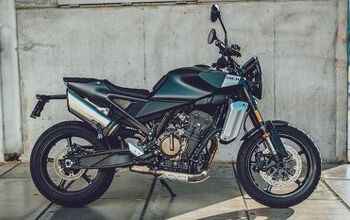



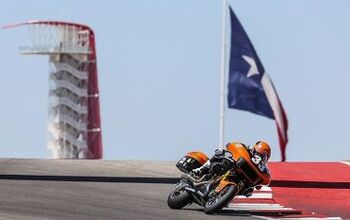
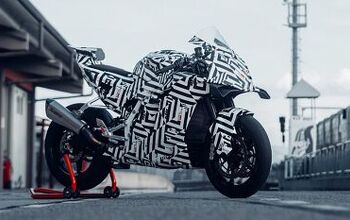
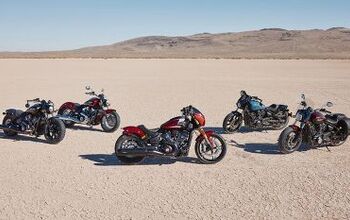

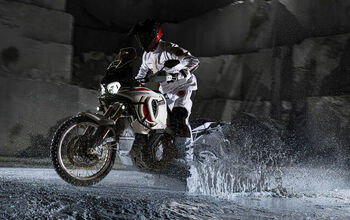


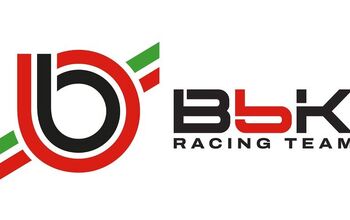
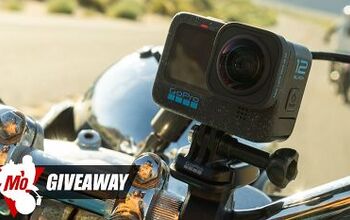
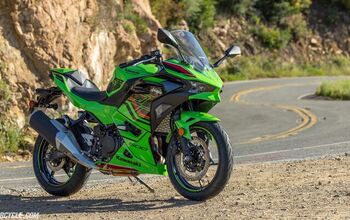
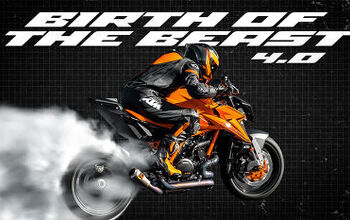
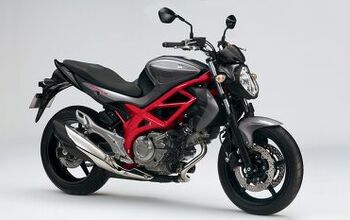
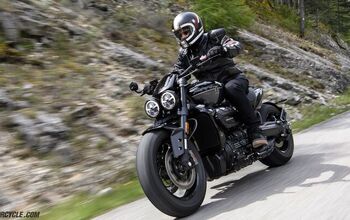

Comments
Join the conversation